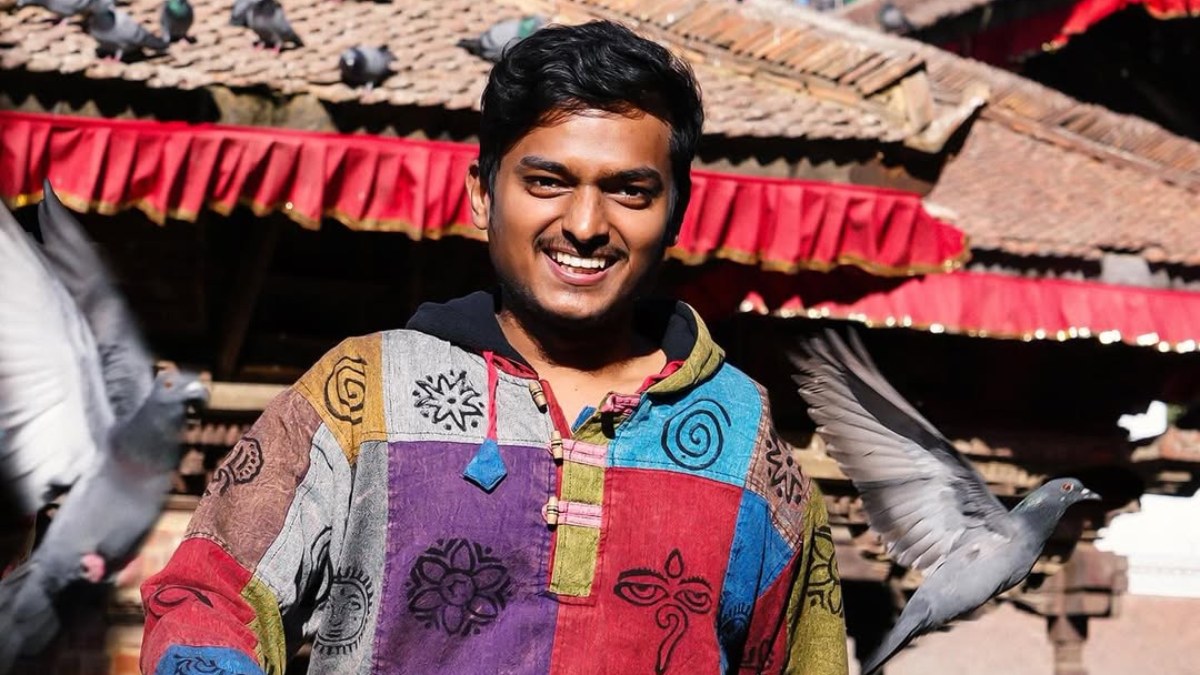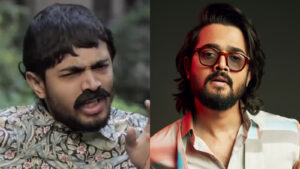- You have no items in your shopping cart
- Subtotal: ₹0.00

Alright, so here’s the deal, I recently went down a bit of a rabbit hole trying to figure out which microphone Dr Bro uses on his Kannada YouTube channel. And not just out of curiosity, I wanted to see what gear content creators who really care about audio in regional language content are working with.
You probably know Dr Bro, the guy is sharp, energetic, and has that engaging, smooth audio that makes his videos really pleasant to watch (even if he’s just sitting in a car talking to the camera).
So naturally, I thought: What mic is he using to get that clean, consistent sound? Turns out, he uses three different microphones depending on the setup and shooting conditions. And honestly? Each one is kind of perfect for the scenario he uses it in.
While Doing My Research, I Found Out Dr Bro Uses These 3 Microphones:
- Rode NT-USB Mini
- Boya BY-M1 Lavalier Mic
- DJI Wireless Mic
Let me walk you through each one, how he uses them, and what I think about them.
1. Rode NT-USB Mini – For Studio-Style Voiceovers and Sit-Down Content
Rode NT-USB Mini Studio Quality USB Unidirectional Microphone
Okay, so the Rode NT-USB Mini is a solid choice. It’s a compact USB condenser mic, perfect for desktops or semi-studio setups. You just plug it into your computer, fire up your recording software Audacity, GarageBand, or even OBS, and you’re good to go.
From what I could tell, Dr Bro uses this mic when he’s doing voice-overs or talking in a controlled indoor setup, like when he’s breaking down something in-depth or doing commentary.
Now, I’ve used this mic myself a couple of times, and I’ll be honest, it’s clean, crisp, and doesn’t pick up too much room noise if you’re fairly close to it.
It’s not ultra high-end, but for around ₹8,000–₹9,000, it’s one of the best USB mics out there for creators just starting out or even mid-level YouTubers.
Pro Tip: If you’re using it without a pop filter, expect some plosives (those “P” sounds). I’d recommend adding a cheap foam windscreen if you’re serious about audio.
2. Boya BY-M1 – Budget Beast for Outdoor or Quick Shots
Ah, the classic Boya BY-M1 lav mic. I mean, who hasn’t used this mic at some point?
What I noticed is that Dr Bro often uses this mic when he’s shooting quick outdoor videos or casual vlogs. You know, those scenarios where setting up a studio mic just doesn’t make sense.
The Boya BY-M1 is crazy affordable, we’re talking under ₹1,000 and surprisingly good for the price. It’s a wired lavalier, so you clip it onto your shirt, run the wire under your clothes, and plug it into your phone or camera. That’s it.
Now, let me be real the wire is super long, which is helpful but also a bit of a hassle to manage. And the battery capsule can feel clunky if you’re not used to it.
But for creators on a tight budget, or someone just starting out? It’s a no-brainer. It’s also really forgiving with noisy environments, and Dr Bro’s team knows how to EQ it well to get rid of that slightly “thin” sound it’s known for.
3. DJI Wireless Mic – Next-Level Stuff for Dynamic Content
DJI Wireless Mic Transmitter for DJI Pocket 2 (CP.OS.00000123.01)
Now here’s where things get exciting. Dr Bro has been using the DJI Wireless Mic setup, and I gotta say, this is pro-level gear without the intimidating complexity of broadcast tools.
DJI’s system comes with two transmitters (the actual mics) and one receiver. You just clip the tiny mic onto your shirt, it’s magnetic, by the way, which is awesome and boom, you’re wirelessly recording crystal-clear audio even if you’re 200 meters away from your camera.
I’ve used this system too, and the audio quality is right up there with Rode Wireless GO II, maybe even a touch better in terms of noise handling and battery performance.
Plus, you get an internal recording, so even if something goes wrong during the shoot (like interference), you’ve got a backup saved right on the mic.
Dr Bro uses this setup when he’s on the move, in interviews, walking shots, or outdoor content where freedom of movement matters.
And if you’ve seen those videos, you’ll notice how his voice stays consistent even when he turns or moves that’s the power of a good wireless lav system.
Price-wise, the DJI kit comes in around ₹28,000–₹30,000, which isn’t cheap, but man, it’s worth it if you’re producing professional content regularly.
So, What’s My Takeaway?
Honestly, what impressed me most is that Dr Bro doesn’t rely on just one mic. He uses different tools for different jobs, and that’s something more creators should think about. It’s not always about buying the most expensive mic; it’s about knowing when and how to use each mic effectively.
If you’re a Kannada content creator, or really any YouTuber working with different environments, here’s what I’d suggest based on what I’ve seen Dr Bro do:
- Starting out? Go for the Boya BY-M1. Cheap, reliable, easy to use.
- Do you do voiceovers or talking head content? Grab a Rode NT-USB Mini.
- Want to go pro and shoot on-the-go stuff? Save up for the DJI Wireless Mic system.
What I’d Do Differently Next Time
Looking back, I think I underestimated how much audio quality matters, especially when you’re producing videos in Indian regional languages, where clarity and pronunciation are critical to keeping viewers engaged.
I started with a generic mic and thought it’d do the job, but once I tried something like the Rode NT-USB Mini, the difference was night and day. And don’t even get me started on the wireless setup. Once you go wireless, it’s hard to go back to tangled cables.
So yeah, next time I shoot something more dynamic, I’d definitely plan for better miking options from the start. And honestly, I’d take a leaf out of Dr Bro’s book, and invest in a few versatile mics, not just one “do-it-all” option.
Expert Editorial Comment
If you’ve been wondering which mic setup actually works for creators who aren’t just sitting in fancy studios, Dr Bro’s choices are a great roadmap.
They’re practical, affordable (except maybe the DJI setup), and tailored to different types of shoots.
And hey, if you’re still unsure what mic to buy for your own channel, feel free to reach out. I’ve tested way too many mics over the years, and I’ve got opinions.
Stay loud, stay clear and please, for the love of good audio, don’t record using your laptop mic anymore.
FAQ’s
What microphone does Dr Bro use for recording his YouTube videos?
Dr Bro uses a mix of three microphones: the Rode NT-USB Mini for indoor/studio setups, the Boya BY-M1 lav mic for quick and budget-friendly outdoor recording, and the DJI Wireless Mic system for professional wireless audio.
Is the Boya BY-M1 good enough for YouTube videos?
Absolutely. Despite its low price, the Boya BY-M1 offers surprisingly decent audio for outdoor or beginner-level content. It's a great starting point for creators on a budget.
Why does Dr Bro use different mics instead of just one?
Because each microphone serves a different purpose. Studio mics like the Rode NT-USB Mini are best for voiceovers, while lav mics and wireless systems offer mobility for outdoor shoots and vlogs.
Is the Rode NT-USB Mini suitable for Kannada content creators?
Yes. The Rode NT-USB Mini provides clear, rich audio that's perfect for voice clarity especially important when working with Indian regional languages like Kannada.
How much does the DJI Wireless Mic cost, and is it worth it?
The DJI Wireless Mic typically costs around ₹28,000–₹30,000. It's a solid investment if you shoot dynamic or professional content and want freedom from cables with top-notch audio.
Can I use the Rode NT-USB Mini directly with my phone?
Not directly. It’s a USB mic meant for desktops or laptops, but with the right OTG adapter, you might be able to connect it to a phone though compatibility varies.
What kind of videos does Dr Bro use the DJI Wireless Mic for?
He uses the DJI Wireless Mic during on-the-move shots, interviews, or outdoor scenes where clean audio and mobility are important.
Does the Boya BY-M1 work with both phones and cameras?
Yes. It has a switch for "camera" and "smartphone" modes, making it versatile for different recording setups.
Which microphone should I start with if I’m new to YouTube?
If you're on a budget, start with the Boya BY-M1. If you’re doing voiceovers or indoor sit-down content, the Rode NT-USB Mini is a great pick.
How can I make my mic audio sound more professional like Dr Bro’s?
Use the right mic for the right situation, record in quiet environments, and learn basic audio editing like noise reduction and EQ. Even budget mics can sound great with proper setup.



